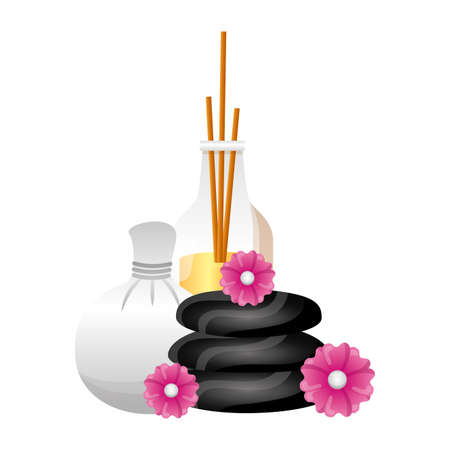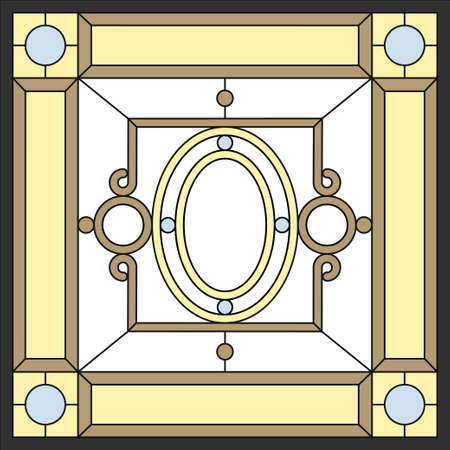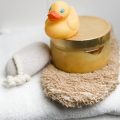1. Understanding Yin and Yang in Feng Shui
When exploring feng shui for modern American interiors, it all starts with the ancient concept of yin and yang. In feng shui, yin and yang are the two essential forces that represent balance and harmony in our living spaces. Yin is soft, calm, and nurturing, while yang is energetic, bright, and active. Together, they create a dynamic equilibrium that is believed to support well-being and positive energy in any environment.
What Are Yin and Yang?
Yin and yang are not opposites but complementary forces. They constantly interact and depend on each other. For example, day (yang) turns into night (yin), activity (yang) is balanced by rest (yin). In the context of interior design, incorporating both qualities can make your home feel comfortable, inviting, and vibrant.
| Yin Qualities | Yang Qualities |
|---|---|
| Soft lighting | Bright lighting |
| Cool colors (blues, grays) | Warm colors (reds, yellows) |
| Smooth textures | Rough or bold textures |
| Curved shapes | Straight lines and angles |
| Quiet corners | Lively gathering spaces |
Why Yin and Yang Matter in Feng Shui
The goal of feng shui is to balance these energies so that no single force overwhelms the space. Too much yin may make a home feel cold or lifeless; too much yang can make it feel chaotic or stressful. The right mix supports relaxation, productivity, and happiness—values that resonate with contemporary American lifestyles.
Adapting Yin-Yang Principles to Modern American Homes
American homes often reflect individuality, comfort, and openness. By understanding yin-yang dynamics, you can adapt traditional feng shui wisdom to fit local tastes. For example:
- Create open layouts (yang) balanced with cozy nooks (yin)
- Add water features like aquariums or fountains for calming yin energy without sacrificing modern style
- Mix sleek furniture (yang) with plush textiles (yin) for visual interest and comfort
- Use artwork or decor that reflects personal meaning—a distinctly American value—while also considering its energy contribution to the room’s overall balance
The Role of Water Elements in Balancing Yin and Yang
Water elements naturally embody yin energy but can also bring movement and life—a touch of yang—into a space. In upcoming sections, well discuss practical ways to introduce water features into your home so you can achieve harmony tailored to your unique American lifestyle.
2. The Water Element: Meaning and Influence
Understanding Water in Feng Shui
In feng shui, the water element plays a powerful role in shaping the energy of a space. Water is deeply connected to the ideas of tranquility, renewal, and prosperity. It represents the flow of energy—also known as “chi”—and helps create balance between yin (calm, receptive energy) and yang (active, outgoing energy). For modern American interiors, using water elements is more than just adding a decorative touch; it’s about bringing peace and positive vibes into your home.
The Symbolism of Water
Water is often seen as a symbol of abundance and growth. In feng shui, moving water—like fountains or aquariums—is especially valued for its ability to attract wealth and encourage creativity. Still water, such as a calm pond or a bowl of water, can help settle the mind and promote relaxation. The sound of water can also reduce stress and bring soothing background noise to busy households.
Common Associations with the Water Element
| Aspect | Symbolic Meaning | Influence on Home Environment |
|---|---|---|
| Tranquility | Calmness, relaxation | Creates peaceful spaces for rest and reflection |
| Prosperity | Abundance, wealth | Attracts financial luck and new opportunities |
| Flow | Movement, adaptability | Keeps energy moving, prevents stagnation in rooms |
Bringing Water Elements into Modern American Homes
Today’s American homes are all about blending style with comfort. Integrating water elements can be simple and stylish—you don’t need to install a large indoor fountain! Think about small tabletop fountains by the entryway, decorative bowls filled with clean water and floating candles on coffee tables, or even artwork that features flowing rivers or oceans. These touches invite calmness while keeping your space feeling fresh and modern.
Tips for Using Water Elements Effectively
- Placement Matters: Position water features near entryways or in living rooms to encourage positive energy flow.
- Avoid Bedrooms: Too much water in sleeping areas may disrupt restful sleep according to feng shui traditions.
- Keep It Clean: Always use clean, clear water to promote clarity and well-being.
- Add Movement: Choose gently moving water features rather than still ones for attracting prosperity.
- Cultural Fit: Opt for designs that match your homes aesthetic—modern glass fountains or classic ceramic bowls work equally well.
The Impact on Daily Life
A well-placed water element can make your home feel like a relaxing retreat from the hustle of everyday life. Whether you’re seeking greater harmony or hoping to attract good fortune, embracing the power of the water element connects ancient wisdom with modern living in a way that feels right at home in any American interior.

3. Practical Water Element Integrations
Creative and Culturally Relevant Water Features
Incorporating water elements into modern American interiors can be both fun and meaningful. By choosing water features that blend with local styles and personal preferences, you can create a balanced space without making it feel cluttered. Here are some popular ways to bring the calming energy of water indoors:
Table: Popular Water Feature Ideas for American Interiors
| Water Feature | Description | Best Placement | Yin/Yang Effect |
|---|---|---|---|
| Small Indoor Fountain | Compact, plug-in tabletop fountains add gentle movement and sound. | Entryway table, living room corner, home office desk | Adds soft Yin energy; soothing atmosphere |
| Aquarium or Fish Bowl | Modern aquariums with clean lines fit many décor styles. | Living room, dining area, home workspace | Balances Yin (water) and Yang (active fish) |
| Water-Inspired Artwork | Pictures, paintings, or prints featuring lakes, rivers, or oceans. | Above sofa, bedroom wall, hallway gallery | Subtle Yin; visual calm without maintenance |
| Sculptural Vases with Water & Plants | Tall glass vases with floating flowers or bamboo stalks. | Coffee table, kitchen island, bathroom shelf | Merges Yin (water) and Yang (living plants) |
| Decorative Bowls with Pebbles and Water | Shallow bowls filled with smooth stones and a bit of water. | Dresser top, side table, meditation corner | Mild Yin energy; easy to refresh or change seasonally |
Tips for Harmonious Integration in American Homes
Selecting the Right Size and Style
When adding water elements, pick pieces that fit the scale of your room. For example, small fountains are great for apartments or smaller homes while larger entryways can handle more dramatic features. Choose designs that match your overall aesthetic—whether it’s farmhouse rustic, mid-century modern, or urban chic.
Location Matters: Where to Place Water Features
The placement of water features is important in feng shui. Avoid bedrooms for active water features like fountains or aquariums as they may disturb sleep. Instead, place them in living rooms, entryways, or offices to encourage positive flow and harmony.
Quick Placement Guide:
- Entryway: Welcomes abundance and good vibes.
- Living Room: Enhances relaxation and social interaction.
- Home Office: Sparks creativity and focus.
- Dining Area: Invites nourishment and lively conversation.
- Avoid Bedrooms: Opt for water-themed art instead of actual water here.
Cultural Touches for American Lifestyles
You can personalize your space by choosing artwork that reflects local landscapes such as the Great Lakes, Pacific coastlines, or Southern rivers. Even sports memorabilia featuring water scenes—like surfing or fishing—can bring a unique American touch while supporting the balance of yin and yang energies at home.
Simplicity Is Key: Don’t Overdo It!
The goal is to harmonize your space without overwhelming it. One thoughtfully placed feature per room is usually enough. Always keep the area around your water element tidy for maximum benefit—clutter can block the positive energy you’re trying to invite!
4. Balancing Yin and Yang for Well-being
Understanding Yin and Yang in American Interiors
In Feng Shui, creating a sense of harmony relies on balancing yin (calm, gentle, restful) and yang (active, lively, bright) energies. In the context of modern American homes, this means blending water elements—like fountains or aquariums—with your current décor to encourage both relaxation and vibrancy. When these energies are balanced, your living spaces feel more welcoming, comfortable, and supportive of overall well-being.
Tips for Harmonizing Water Elements with Your Décor
Integrating water features doesn’t have to disrupt your existing style. Here’s how you can bring in water elements while maintaining balance:
| Tip | How It Supports Balance | American Style Ideas |
|---|---|---|
| Choose the Right Placement | Placing water elements in the entryway or living room attracts positive energy without overwhelming the space. | Try a small tabletop fountain near the front door or an aquarium in the living room corner. |
| Match Materials & Colors | Select water features that complement your furniture and color scheme to create visual harmony. | If your home has lots of wood accents, consider a fountain with stone or glass details in calming blues or greens. |
| Balance Yin with Yang Accessories | Add bright lighting, metal frames, or lively art near water features to keep energy from becoming too passive. | Hang a bold painting above an aquarium or place a brass lamp next to a fountain. |
| Keep It Simple & Functional | Avoid clutter by choosing sleek, easy-to-maintain water elements that fit your lifestyle. | Select compact fountains for kitchen counters or bedside tables for subtle impact. |
| Create Cozy Gathering Spots | Combine the peaceful sound of water with comfortable seating to encourage relaxation and conversation. | Add armchairs around a coffee table fountain in the family room for a welcoming vibe. |
Supporting Wellness and Comfort at Home
Water elements naturally evoke calmness and clarity. By thoughtfully combining them with your favorite American décor pieces—whether it’s farmhouse chic, modern minimalism, or eclectic vintage—you help nurture both yin and yang energies. This approach brings out the best in your home: it feels restful yet lively, stylish yet personal. Remember, the key is balance—let each element support your family’s comfort and well-being every day.
5. Case Studies: American Homes Embracing Water Elements
Real-Life Success Stories
Across the United States, more homeowners are turning to Feng Shui principles to create balance and harmony in their living spaces. By integrating water elements—such as fountains, aquariums, or even thoughtfully placed mirrors—many have experienced positive changes in both atmosphere and energy flow at home. Below are a few inspiring examples from modern American interiors.
Case Study 1: Urban Apartment Oasis
Emily, a graphic designer living in Chicago, added a small tabletop fountain to her living room. She placed it near the entrance to invite positive energy and calmness into her busy city life. After introducing this water feature, Emily noticed a sense of tranquility and found her guests often commented on the peaceful vibe of her apartment.
Key Takeaways:
- Small-scale water features can make a big impact, even in compact spaces.
- Placement near entrances helps foster welcoming energy.
Case Study 2: Suburban Family Home Harmony
The Johnson family from Dallas installed a fish tank in their open-plan kitchen and dining area. Not only did it become a conversation starter during gatherings, but they also observed improved communication and less tension among family members. The movement of the fish and gentle bubbling sounds contributed to a soothing atmosphere.
Key Takeaways:
- Aquariums add visual interest and promote relaxation.
- Water features can support harmonious relationships within the household.
Case Study 3: California Modern Retreat
Samantha, who renovated her Los Angeles bungalow with a minimalist approach, incorporated reflective glass tiles and a slim indoor waterfall wall in her entryway. This not only brought in the calming presence of water but also enhanced natural light throughout the space, making her home feel more open and balanced.
Key Takeaways:
- Modern design elements like glass tiles and waterfall walls blend seamlessly with American décor.
- Reflective surfaces amplify both light and positive energy.
Comparison Table: Water Element Applications
| Home Type | Water Element Used | Main Benefit | Cultural Fit |
|---|---|---|---|
| Urban Apartment | Tabletop Fountain | Calming entryway energy | Compact, easy to maintain |
| Suburban House | Aquarium | Family harmony & relaxation | Fun for kids, decorative for gatherings |
| Bungalow/Modern Home | Glass Tiles & Indoor Waterfall Wall | Enhanced light & openness | Sleek, fits contemporary style |
Tips for Integrating Water Elements at Home
- Select a water feature that matches your space—small fountains for apartments, larger pieces for houses.
- Position water elements where you want to invite calm or social connection (entryways, living rooms).
- Maintain cleanliness of any water feature to keep energy fresh and vibrant.
- Add plants or stones around water features for an extra touch of natural harmony.
These real-life stories show how simple changes can bring Yin-Yang balance and create serene, inviting homes across America by thoughtfully applying water elements.


